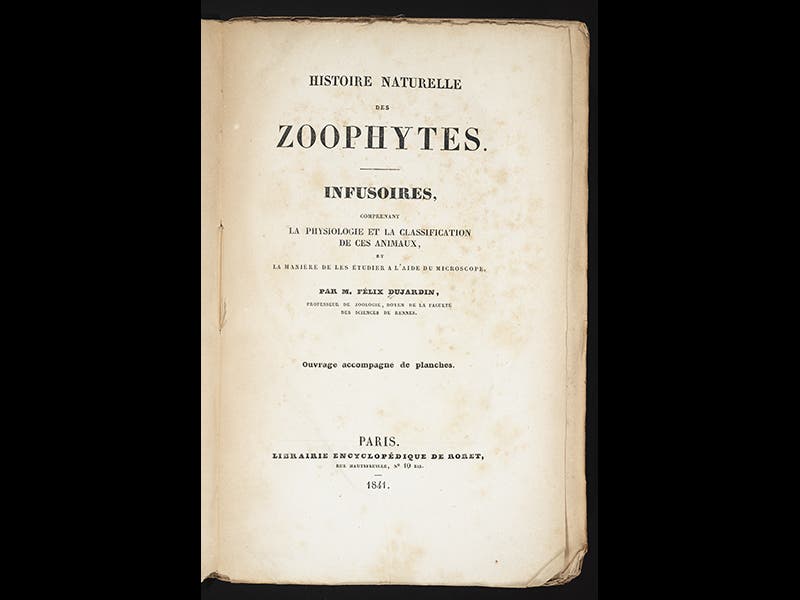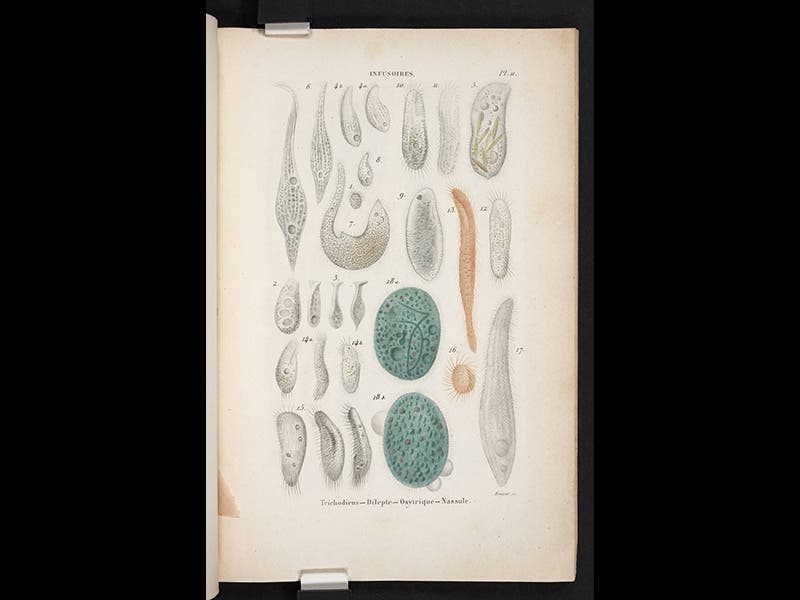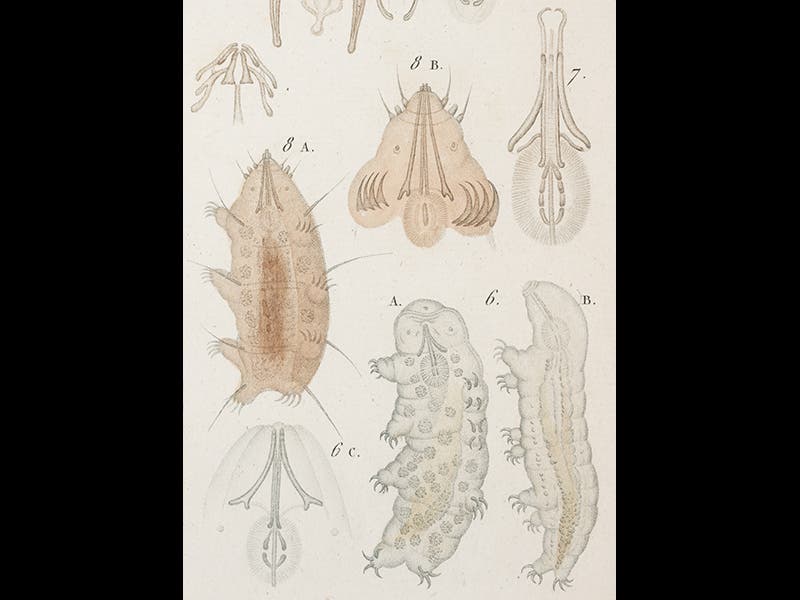Scientist of the Day - Felix Dujardin

Felix Dujardin, a French invertebrate zoologist and microscopist, was born Apr. 5, 1801. Dujardin worked during what one might call the "golden age of infusoria," 1838-1850, when a number of observers turned their microscopes to what we now call Protozoa--those varied and tiny creatures like Volvox and Vorticella. The first book on the subject was Georg Ehrenberg’s Die Infusionsthierchen (1838), and Dujardin followed with his treatise, Historie naturelle des zoophytes, in 1841. Zoophyte was another 19th-century term--literally "animal plant"--for these microscopic forms of life. We exhibited Ehrenberg's book in our Grandeur of Life exhibition in 2009, and we planned to display Dujardin as well, but we ran out of room. However, we shot a number of images of what Dujardin called “Rhizopoda”, yet another early term for Protozoa; these images are available online, and we show three of his plates above. I direct you to one (third image) that depicts, among other things, the tiny tardigrade, or "water bear". There are three figures on the plate, at bottom center and bottom right, of this 8-footed little wiggle-worm, and we also show a detail of this part of the plate (fourth image). Water bears were discovered back in 1773, but Dujardin has the first good images of these little beasties. A number of years ago, NPR’s Science Friday did a piece on tardigrade research at the University of North Carolina, and the UNC website still has the NPR segment (and several short videos) of water bears in action. Click on the arrows to start the bears moving. The tardigrade shown in the videos is named Hypsibius dujardini, in honor of our Scientist of the Day.
Dr. William B. Ashworth, Jr., Consultant for the History of Science, Linda Hall Library and Associate Professor, Department of History, University of Missouri-Kansas City. Comments or corrections are welcome; please direct to ashworthw@umkc.edu.










